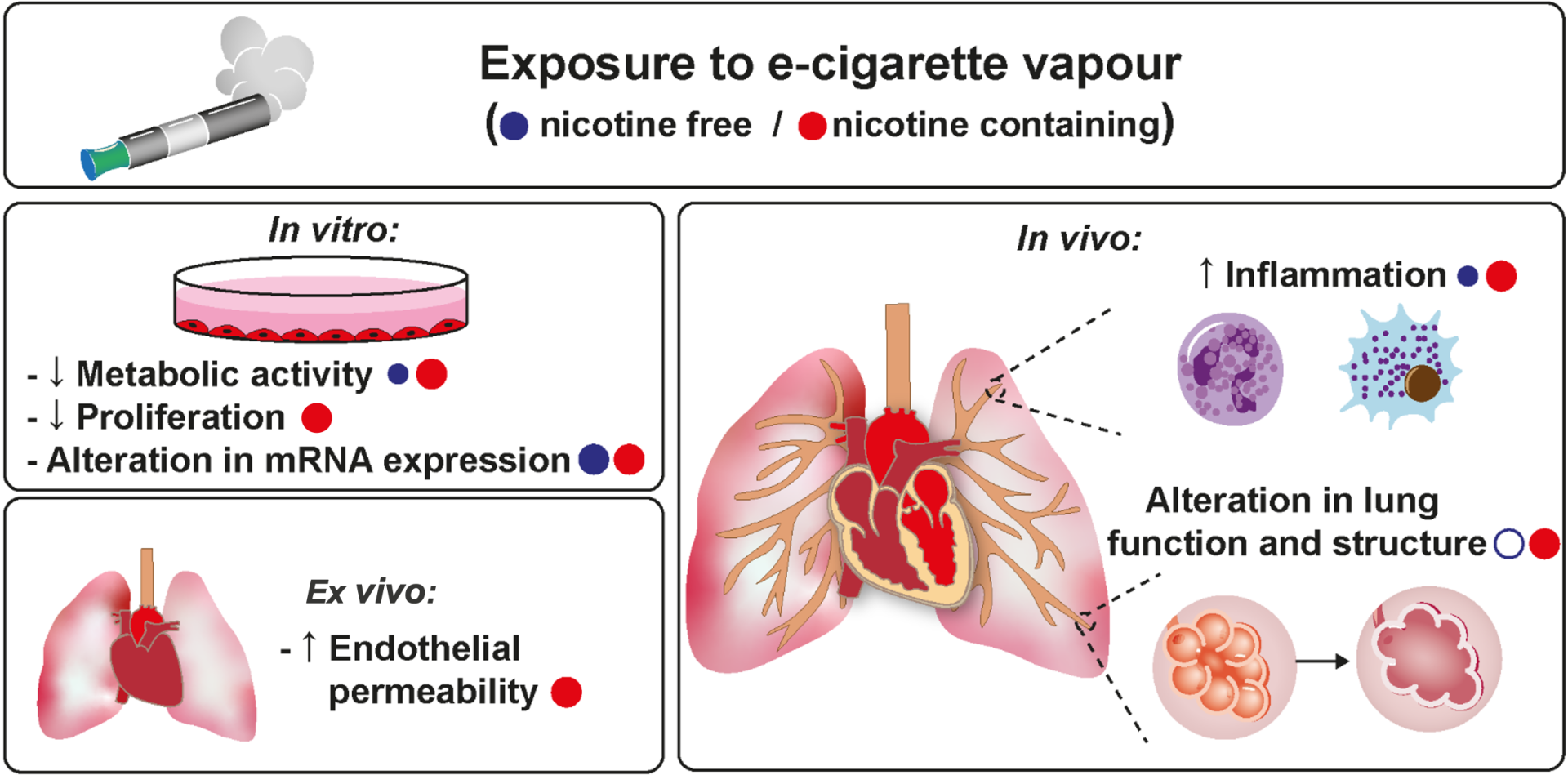April 2023
Eur Respir J
Roxlau ET, Pak O, Hadzic S, Garcia-Castro CF, Gredic M, Wu CY, Schäffer J, Selvakumar B, Pichl A, Spiegelberg D, Deutscher J, Bednorz M, Schäfer K, Kraut S, Kosanovic D, Zeidan EM, Kojonazarov B, Herold S, Strielkov I, Guenther A, Wilhelm J, Khalifa MMA, Taye A, Brandes RP, Hecker M, Grimminger F, Ghofrani HA, Schermuly RT, Seeger W, Sommer N, Weissmann N.

Inhalation of electronic cigarette (e-cigarette) vapour is becoming increasingly popular as alternative to tobacco smoking, especially among young people. Currently, its long-term effects on the airways, lung parenchyma and vasculature, and in particular the specific role of nicotine for acute and chronic lung damage, are poorly understood.
We therefore investigated the effect of in vitro, ex vivo and in vivo exposure to nicotine-containing or nicotine-free e-cigarette vapour on pulmonary cellular characteristics, pulmonary vascular and lung function, and structural alterations of the lung.
We found that in vitro exposure to e-cigarette vapour extract induced changes in gene expression of epithelial cells and pulmonary arterial smooth muscle cells independent of the presence of nicotine, but preferentially nicotine-containing e-cigarette vapour extract decreased metabolic activity and proliferation. Additionally, acute inhalation of nicotine-containing e-cigarette vapour but not nicotine-free vapour increased pulmonary endothelial permeability in isolated ventilated and perfused lungs. Long-term, in vivo exposure of mice to nicotine-containing e-cigarette vapour for 8 months significantly increased the number of inflammatory cells, in particular lymphocytes in the bronchoalveolar lavage and lung tissue compared to the control and nicotine-free vapour group. Accordingly, cytokines in the bronchoalveolar lavage were predominantly increased by nicotine-containing e-cigarette vapour. Importantly, nicotine-containing e-cigarette vapour caused significant changes in lung structure and function similar to mild tobacco smoke-induced alterations, which also could be detected in a meta-analysis of the different parameters in the nicotine-free vapour group, albeit to a lesser degree. In contrast, the pulmonary vasculature was not significantly affected by e-cigarette vapour with or without nicotine.
In conclusion, e-cigarette vapour with and without nicotine exerts harmful effects on the lung. Nicotine-independent e-cigarette vapour components can induce transcriptional alterations on cellular level and mild pulmonary changes in vivo, while inclusion of nicotine induces significant endothelial damage, inflammation and parenchymal alterations characteristic for mild cigarette-smoke induced pulmonary alterations.